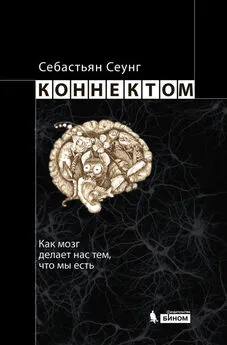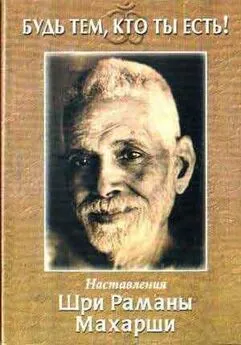Себастьян Сеунг - Коннектом. Как мозг делает нас тем, что мы есть
- Название:Коннектом. Как мозг делает нас тем, что мы есть
- Автор:
- Жанр:
- Издательство:Литагент «БИНОМ. Лаборатория знаний»a493f192-47a0-11e3-b656-0025905a06ea
- Год:2014
- Город:Москва
- ISBN:978-5-9963-2672-3
- Рейтинг:
- Избранное:Добавить в избранное
-
Отзывы:
-
Ваша оценка:
Себастьян Сеунг - Коннектом. Как мозг делает нас тем, что мы есть краткое содержание
Что такое человек? Какую роль в формировании личности играют гены, а какую – процессы, происходящие в нашем мозге? Сегодня ученые считают, что личность и интеллект определяются коннектомом, совокупностью связей между нейронами. Описание коннектома человека – невероятно сложная задача, ее решение станет не менее важным этапом в развитии науки, чем расшифровка генома, недаром в 2009 году Национальный институт здоровья США запустил специальный проект – «Коннектом человека», в котором сегодня участвуют уже ученые многих стран.
В своей книге Себастьян Сеунг, известный американский ученый, профессор компьютерной нейробиологии Массачусетского технологического института, рассказывает о самых последних результатах, полученных на пути изучения коннектома человека, и о том, зачем нам это все нужно.
Коннектом. Как мозг делает нас тем, что мы есть - читать онлайн бесплатно ознакомительный отрывок
Интервал:
Закладка:
291. Rilling, J. K. 2008. Neuroscientific approaches and appli cations within anthropology. American Journal of Physical Anthropology , 137 (S47): 2–32.
292. Rilling, J. K., and T. R. Insel. 1998. Evolution of the cerebellum in primates: Differences in relative volume among monkeys, apes and humans. Brain, Behavior, and Evolution , 52 (6): 308.
293. Rilling, J. K., and T. R. Insel. 1999. The primate neocortex in comparative persp ec tive using magnetic resonance imaging. Journal of Human Evolut ion , 37 (2): 191–223.
294. Robinson, A. 2002. Lost languages: The enigma of the world’s undeciphered scripts. New York: McGraw-Hill.
295. Rosenzweig, M. R. 1996. Aspects of the search for neural mechanisms of memory. Annual Review of Psychology , 47 (1): 1–32.
296. Ruestow, E. G. 1983. Images and ideas: Leeuwenhoek’s perception of the spermatozoa. Journal of the History of Biology, 16 (2): 185–224.
297. Ruestow, E. G. 1996. The microscope in the Dutch Republic: The shaping of discovery. New York: Cambridge University Press.
298. Rumelhart, David E., and James L. McClelland. 1986. Parallel distributed processing: Explorations in the microstructure of cognition. Cambridge, Mass.: MIT Press.
299. Russell, R. M. 1978. The CRAY-1 computer system. Communications of the ACM , 21 (1): 63–72.
300. Ruthazer, E.S., J. Li, and H. T. Cline. 2006. Stabilization of axon branch dynamics by synaptic maturation. Journal of Neuroscience , 26 (13): 3594.
301. Rymer, R. 1994. Genie: A scientific tragedy . New York: HarperPerennial.
302. Sadato, N., A. Pascual-Leone, J. Grafman, V. Ibanez, M. P. Deiber, G. Dold, and M. Hallett. 1996. Activation of the primary visual cortex by Braille reading in blind subjects. Nature , 380 (6574): 526–528.
303. Sahay, A., and R. Hen. 2007. Adult hippocampal neurogenesis in depression. Nature Neuroscience , 10 (9): 1110–1115.
304. Sale, A., J. F. M. Vetencourt, P. Medini, M. C. Cenni, L. Baroncelli, R. De Pasquale, and L. Maffei. 2007. Environm ental enrichment in adulthood promotes amblyopia recovery through a reduction of intracortical inhibition. Nature Neuro science, 10 (6): 679–681.
305. Schildkraut, J. J. 1965. The catecholamine hypothesis of affective disorders: A review of supporting evidence. American Journal of Psychiatry , 122 (5): 509–522.
306. Schiller, F. 1963. Leborgne – in memoriam. Medical History , 7 (1): 79.
307. Schiller, F. 1992. Paul Broca: Founder of French anthropology, explorer of the brain. New York: Oxford University Press.
308. Schmahmann, J. D. 2010. The role of the cerebellum in cognition and emotion: Personal reflections since 1982 on the dysmetria of thought hypothesis, and its historical evolution from theory to therapy. Neuropsychology Review , 20 (3): 236–260.
309. Schneider, G. E. 1973. Early lesions of superior colliculus: Factors affecting the formation of abnormal retinal projections. Brain, Behavior and Evolution , 8 (1): 73.
310. Schneider, G. E. 1979. Is it really better to have your brain lesion early? A revision of the “Kennard principle”. Neuropsychologia , 17 (6): 557.
311. Schüz, A., D. Chaimow, D. Liewald, and M. Dortenman. 2006. Quantitative aspects of corticocortical connections: A tracer study in the mouse. Cerebral Cortex , 16 (10): 1474.
312. Selfridge, O. G. Pattern recognition and modern computers. 1955. In Proceedings of the March 1–3, 1955, Western Joint Computer Conference , pp. 91–93. ACM.
313. Seligman, M. 2011. Flourish: A visionary new understanding of happiness and well-being. New York: Free Press.
314. Selkoe, D. J. 2002. Alzheimer’s disease is a synaptic failure. Science , 298 (5594): 789.
315. Seung, H. S. 2009. Reading the book of memory: Sparse sampl ing versus dense mapping of connectomes. Neuron , 62 (1): 17–29.
316. Shen, W. W. 1999. A history of antipsychotic drug development. Comprehensive Psychiatry , 40 (6): 407–414.
317. Shendure, J., R. D. Mitra, C. Varma, and G. M. Church. 2004. Advanced sequencing technologies: Methods and goals. Nature Reviews Genetics , 5 (5): 335–344.
318. Sherrington, C. S. 1924. Problems of muscular receptivity. Nature , 113 (2851): 894–894.
319. Shoemaker, Stephen J. 2002. Ancient traditions of the Virgin Mary’s dormition and assumption. Oxford: Oxford University Press.
320. Sizer, Nelson. 1888. Forty years in phrenology. New York: Fowler & Wells.
321. Soldner, F., D. Hockemeyer, C. Beard, Q. Gao, G. W. Bell, E. G. Cook, G. Hargus, A. Blak, O. Cooper, M. Mitalipova, et al. 2009. Parkinson’s disease patient-derived induced pluripotent stem cells free of viral reprogramming factors. Cell , 136 (5): 964–977.
322. Song, S., P. J. Sjostrom, M. Reigl, S. Nelson, and D. B. Chklovskii. 2005. Highly non-random features of synaptic connectivity in local cortical circuits. PLoS Biol , 3 (3): e68.
323. Sporns, O., J. P. Changeux, D. Purves, L. White, and D. Riddle. 1997. Variation and selection in neural function: Authors’ reply. Trends in Neurosciences , 20 (7): 291–293.
324. Sporns, O., G. Tononi, and R. Kotter. 2005. The human connectome: A structural description of the human brain. PLoS Comput Biol , 1 (4): e42.
325. Spurzheim, J. G. 1833. A view of the elementary principles of education: Founded on the study of the nature of man. Boston: Marsh, Capen & Lyon.
326. Steen, R. G., C. Mull, R. Mcclure, R. M. Hamer, and J. A. Lieberman. 2006. Brain volume in first-episode schizophrenia: Systematic review and meta-analysis of magnetic resonance imaging studies. British Journal of Psychiatry , 188 (6): 510.
327. Steffenburg, S., C. Gillberg, L. Hellgren, L. Andersson, I. C. Gillberg, G. Jakobsson, and M. Bohman. 1989. A twin study of autism in Denmark, Finland, Iceland, Norway, and Sweden. Journal of Child Psychology and Psychiatry , 30 (3): 405–416.
328. Stent, G. S. 1973. A physiological mechanism for Hebb’s postulate of learning. Proceedings of the National Academy of Sciences , 70 (4): 997.
329. Sterr, A., M. M. Müller, T. Elbert, B. Rockstroh, C. Pantev, and E. Taub. 1998. Perceptual correlates of changes in cortical representation of fingers in blind multifinger Braille readers. Journal of Neuroscience , 18 (11): 4417.
330. Stevens, C. F. 1998. Neuronal diversity: Too many cell types for comfort? Current Biology , 8 (20): R708-R710.
331. Stratton, G. M. 1897a. Vision without inversion of the retinal image: Part 1. Psychological Review , 4 (4): 341–360.
332. Stratton, G. M. 1897b. Vision without inversion of the retinal image: Part 2. Psychological Review , 4 (5): 463–481.
333. Strebhardt, K., and A. Ullrich. 2008. Paul Ehrlich’s magic bullet concept: 100 years of progress. Nature Reviews Cancer , 8 (6): 473–480.
334. Strick, P. L., R. P. Dum, and J. A. Fiez. 2009. Cerebellum and nonmotor function. Annual Review of Neuroscience , 32: 413–434.
335. Stuart, Greg, Nelson Spruston, and Michael Häusser. 2007. Dendrites. Oxford: Oxford University Press.
336. Sur, M., P. E. Garraghty, and A. W. Roe. 1988. Experimentally induced visual projections into auditory thalamus and cortex. Science , 242 (4884): 1437.
337. Swanson, L. W. 2000. What is the brain? Trends in Neurosciences , 23 (11): 519–527.
338. Swanson, L. W. 2012. Brain architecture: Understanding the basic plan , 2nd ed. New York: Oxford University Press.
339. Tang, Y., J. R. Nyengaard, D. M. G. De Groot, and H. J. G. Gundersen. 2001. Total regional and global number of synapses in the human brain neocortex. Synapse , 41 (3): 258–273.
340. Taub, R. 2004. Liver regeneration: From myth to mechanism. Nature Reviews Molecular Cell Biology , 5 (10): 836–847.
341. Tegmark, M. 2000. Why the brain is probably not a quantum computer. Information Sciences , 128 (3–4): 155–179.
342. Tipler, Frank J. 1994. The physics of immortality: Modern cosmology, God, and the resurrection of the dead. New York: Doubleday.
343. Tomasch, J. 1954. Size, distribution, and number of fibres in the human corpus callosum. Anatomical Record , 119 (1): 119–135.
344. Towbin, A. 1973. The respirator brain death syndrome. Human Pathology , 4 (4): 583–594.
345. Treffert, D. A. 2009. The savant syndrome, an extraordinary condition: A synopsis, past, present, future. Philosophical Trans actions of the Royal Society B: Biological Sciences , 364 (1522): 1351.
346. Turing, A. M. 1950. Computer machinery and intelligence. Mind , 59 (236): 433–460.
347. Turkheimer, E. 2000. Three laws of behavior genetics and what they mean. Current Directions in Psychological Science , 9 (5): 160.
348. Utter, A. A., and M. A. Basso. 2008. The basal ganglia: An overview of circuits and function. Neuroscience and Biob ehav ioral Reviews , 32 (3): 333–342.
349. Varshney, L. R., B. L. Chen, E. Paniagua, D. H. Hall, and D. B. Chklovskii. 2011. Structural properties of the Caenorhabditis elegans neuronal network. PLoS Computational Biology , 7 (2): e1001066.
350. Vein, A. A., and M. L. C. Maat-Schieman. 2008. Famous Russian brains: Historical attempts to understand intelligence. Brain , 131 (2): 583.
351. Vetencourt, J. F. M., A. Sale, A. Viegi, L. Baroncelli, R. De Pasquale, O. F. O’Leary, E. Castrén, and L. Maffei. 2008. The antidepressant fluoxetine restores plasticity in the adult visual cortex. Science , 320 (5874): 385–388.
352. Vining, E. P. J., J. M. Freeman, D. J. Pillas, S. Uematsu, B. S. Cars on, J. Brandt, D. Boatman, M. B. Pulsifer, and A. Zuckerberg. 1997. Why would you remove half a brain? The outcome of 58 children after hemispherectomy. Pediatrics , 100 (2): 163.
353. Vita, A., L. De Peri, C. Silenzi, and M. Dieci. 2006. Brain morphology in first-episode schizophrenia: A meta-analysis of quantitative magnetic resonance imaging studies. Schizo phrenia Research , 82 (1): 75–88.
354. Voigt, J., and H. Pakkenberg. 1983. Brain weight of Danish children: A forensic material. Acta Anatomica , 116 (4): 290.
355. Wang, J. W., D. J. David, J. E. Monckton, F. Battaglia, and R. Hen. 2008. Chronic fluoxetine stimulates maturation and synaptic plasticity of adult-born hippocampal granule cells. Journal of Neuroscience , 28 (6): 1374–1384.
356. West, M. J., and A. P. King. 1990. Mozart’s starling. American Scientist , 78 (2): 106–114.
357. White, J. G., E. Southgate, J. N. Thomson, and S. Brenner. 1986. The structure of the nervous system of the nematode Caenorhabditis elegans. Philosophical Transactions of the Royal Society of London. B, Biological Sciences, 314 (1165): 1.
358. Wigmore, B. 2008. How tyrant wife ‘drove two of her five husbands to suicide’ – after one was transplanted with heart of the other. Daily Mail , Sept. 1.
359. Wilkes, A. L., and N. J. Wade. 1997. Bain on neural networks. Brain and Cognition , 33 (3): 295–305.
360. Witelson, S. F., D. L. Kigar, and T. Harvey. 1999. The exceptional brain of Albert Einstein. Lancet , 353 (9170): 2149–2153.
361. Woods, E. J., J. D. Benson, Y. Agca, and J. K. Critser. 2004. Fundamental cryobiology of reproductive cells and tissues. Cryobiology , 48 (2): 146–156.
Читать дальшеИнтервал:
Закладка:


![Рейчел Херц - Почему мы едим то, что едим [Наука о том, как наш мозг диктует нам, что есть]](/books/1061252/rejchel-herc-pochemu-my-edim-to-chto-edim-nauka-o-t.webp)
![Алан Джасанов - Мозг: прошлое и будущее [Что делает нас теми, кто мы есть]](/books/1070785/alan-dzhasanov-mozg-proshloe-i-buduchee-chto-delaet.webp)






